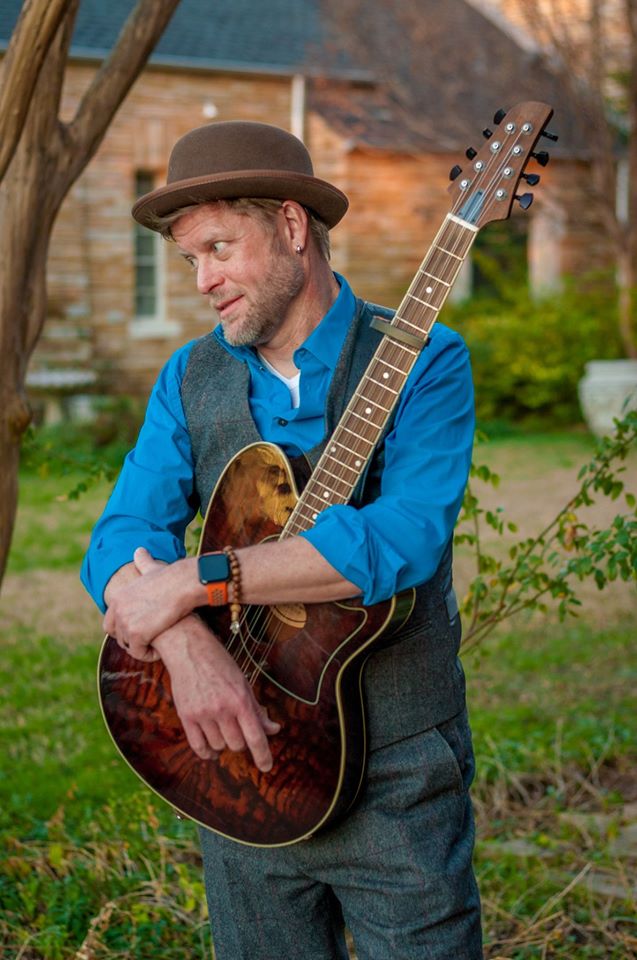
I’ve gotten a lot of questions about the somewhat unique instrument I’ve been playing in my live streams. Well, it’s my approximation of an Irish bouzouki / octave mandolin. I affectionately refer to it as a “bouzar” or a “gadzouki” (or if I’m feeling particularly fancy or international, a “fauxzouki“).
I started playing bouzouki back in 1999 on an inexpensive Trinity College model. I found it lacking in several key areas:
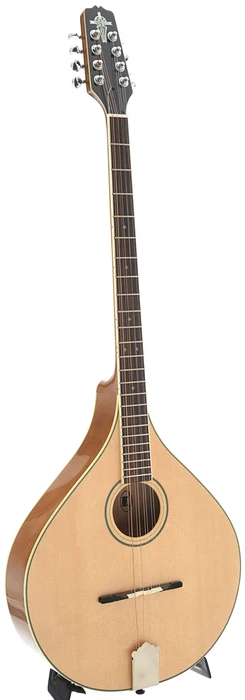
- It wouldn’t stay in tune for love nor money
- It took loop end strings (which were/are harder to find than regular ball end strings)
- It had a floating bridge (which was incompatible with my aggresive rhythmic playing style)
- It didn’t have a built-in pickup
- It was poorly balanced due to the unusually long neck small body
- It was hard to play sitting down / without a strap (due to the aforementioned balance issue and the tear drop body shape)
So I began a quest for a new instrument that would address these issues. There are many great luthiers out there who will be happy to build you a lovely custom instrument, but I had neither the patience (6+ month waiting period) nor money ($2,500+) to explore that option at the time. I’d seen photos of Andy Irvine and Dick Gaughan playing guitar shaped instruments that were strung like a bouzouki, so I figured my best option would be to buy a standard guitar and modify it.
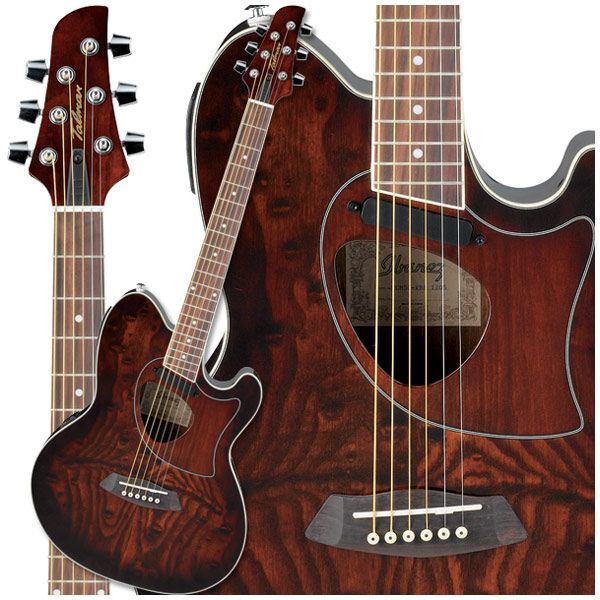
I tried a few of different 12-string and 6-string guitars before I hit on my current solution: an Ibanez Talman TCM50. This instrument addressed all of my aforementioned issues, and it didn’t sound great as a purely acoustic guitar, the slimer, smaller body shape made it sound more “bouzouki-like”, and it is very comfortable to play.
- It’s relatively inexpensive ~$300
- It’s widely available online
- It’s very light and easy to play
- It fits in a standard guitar case
- It takes regular ball end strings
- It has a built in pickup and EQ (and new models even have a tuner)
The only hitch is finding a local luthier who will do the required modifications to the headstock, nut, and saddle. I had mine done by Neil Sargent in Houston, TX – and he went above and beyond by applying a nice wood veneer on the headstock that matched the body (and covered the holes from the original tuners).
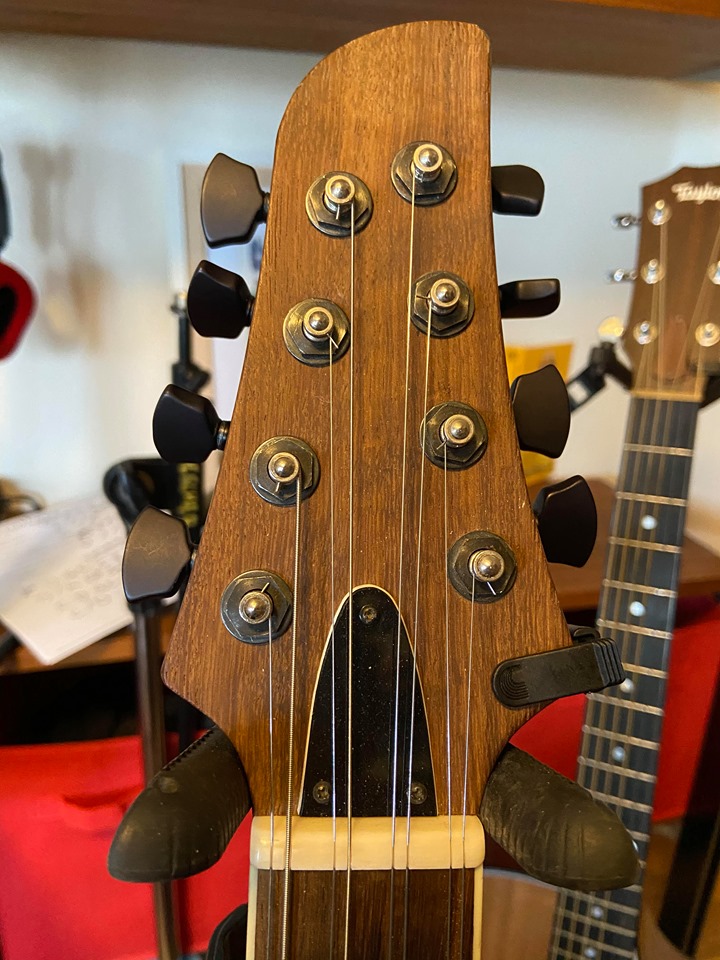
Headstock (front) and Nut 
Headstock (rear) 
Saddle
As for the geeky technical stuff, I tune the bottom two courses in octaves, the top two courses in unison (gG-dD-aa-dd). When possible, I prefer wound bronze strings over plain nickel (although 18 wound strings are hard to find). And I use the following string guages (adapted from standard guitar string guages, so as not to put additional stress on the neck):
| LOW | HIGH | ||
| g – .018 wound G – .042 wound |
d – .012 plain D – .028 wound |
a – .018 wound a – .018 wound |
d – .012 plain d – .012 plain |
In addition to my acoustic instrument, I’ve tried a couple different variations of an “eZouk” before hitting on another winner: the Ibanez Artcore AM53 semi-hollow body electric. Lots of fun to play (and nice to have as a backup in case of a broken string).
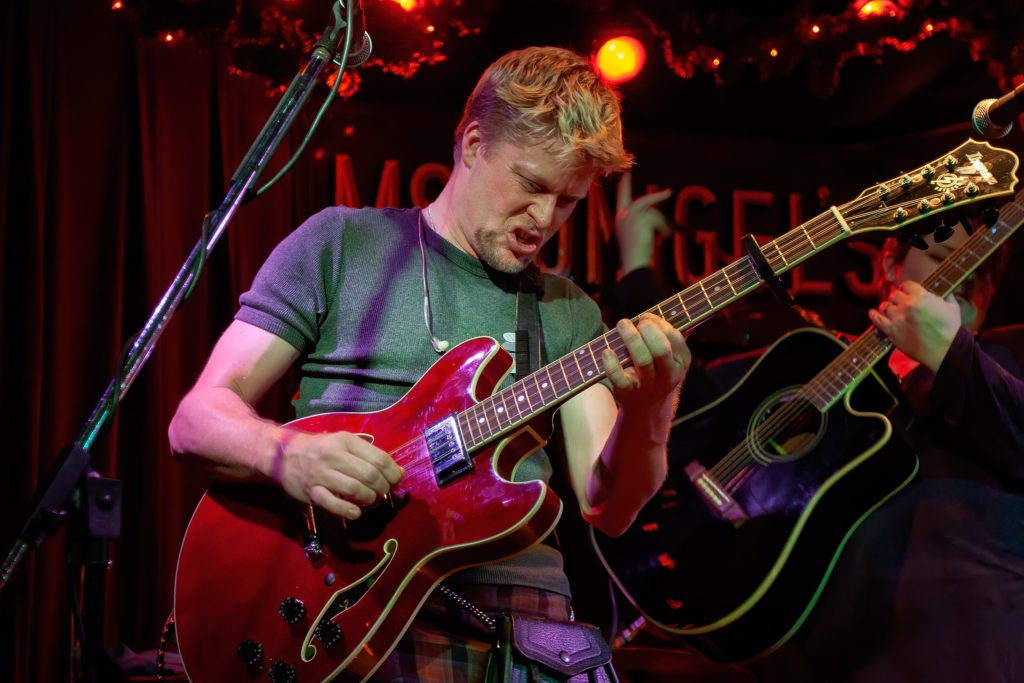
If you have any additional questions, please drop me a line!